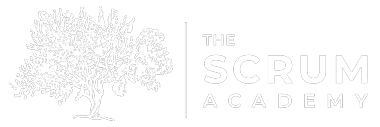What is it About the Daily Scrum?
Last week, I was teaching a Certified ScrumMaster class in Irvine and I had one participant who just hated Scrum. I mean he really hated it and really hated being in the class. From his perspective, all of Scrum seemed too heavy, not applicable to the work he does and was just another (?) form of micromanagement. Not that I see it as my job to convince people of the benefits of Scrum, but it was difficult to have a dialogue with someone who had already made up his mind. I suppose that might also apply to me…hmmm.
In any event, the one part of Scrum this individual objected to the most was the Daily Scrum – our short, no more than fifteen minutes, conversation each day dedicated to helping the Team stay on track. Sometimes this conversation is referred to as a “stand-up meeting”, but standing-up is not required. The Daily Scrum is a meeting for the Team facilitated by the ScrumMaster. While I like the Product Owner to be present at the Daily Scrum, they are not required to be at every Daily Scrum.
What is required is that the conversation is short, focused and serves as a way to reconnect with other people on your Team. It is not a problem solving session, but a meeting about the other meetings you need to have in the day. A Scrum Team uses the Daily Scrum to coordinate their activities, look for opportunities to collaborate, renew their focus, provide visibility and inspect-and-adapt if they are not on track to deliver on their Sprint Goal.
This conversation has a very specific agenda and a very specific timebox. Ken Schwaber and Jeff Sutherland have adjusted the agenda a bit in their 2013 update to the Scrum Guide to reinforce that the Daily Scrum is about the Sprint Goal, but since I have been teaching that for years I prefer to stick to the original three questions. In the end, I do not care what questions you use in your Daily Scrum as long as you cover the basics I describe below.
- What did you do yesterday? This question is about being accountable for what you did (or did not do) the day before. If you did not do what you said you were going to do yesterday, you need to tell people what you actually did.
- What will you do today? Here Team members are asked to make a commitment to their peers on what they will do in the next twenty-four hours. Sometimes people do not know what they are supposed to do and it is OK to say “I don’t know.”
- What is blocking your progress? This question is all about visibility. One part of the question is about telling people if you are stuck or are dealing with an impediment\obstacles. A second part of this question – that is equally important – is to tell your peers that you are available to help.
The Daily Scrum is not a status update to management, not an opportunity for people outside the Team (i.e. management) to second guess the Team’s commitment, not a place to add new features to the scope of the Sprint and not a place for micromanagement. Also, everyone (Team members, Product Owner, ScrumMaster and any visitor) answers the questions – there is no silly “pigs and chickens” bulls#@t with the Teams I work with.

